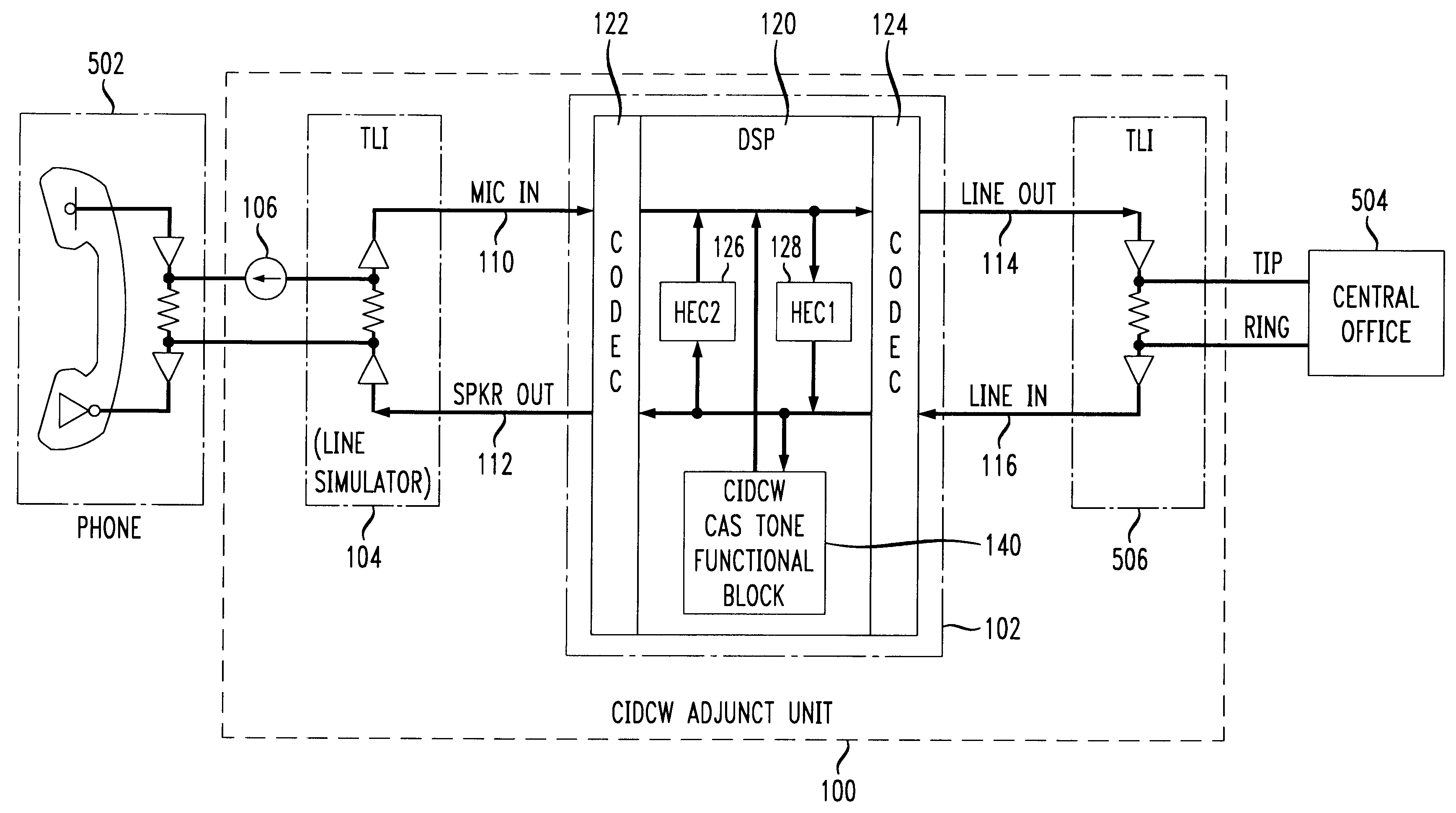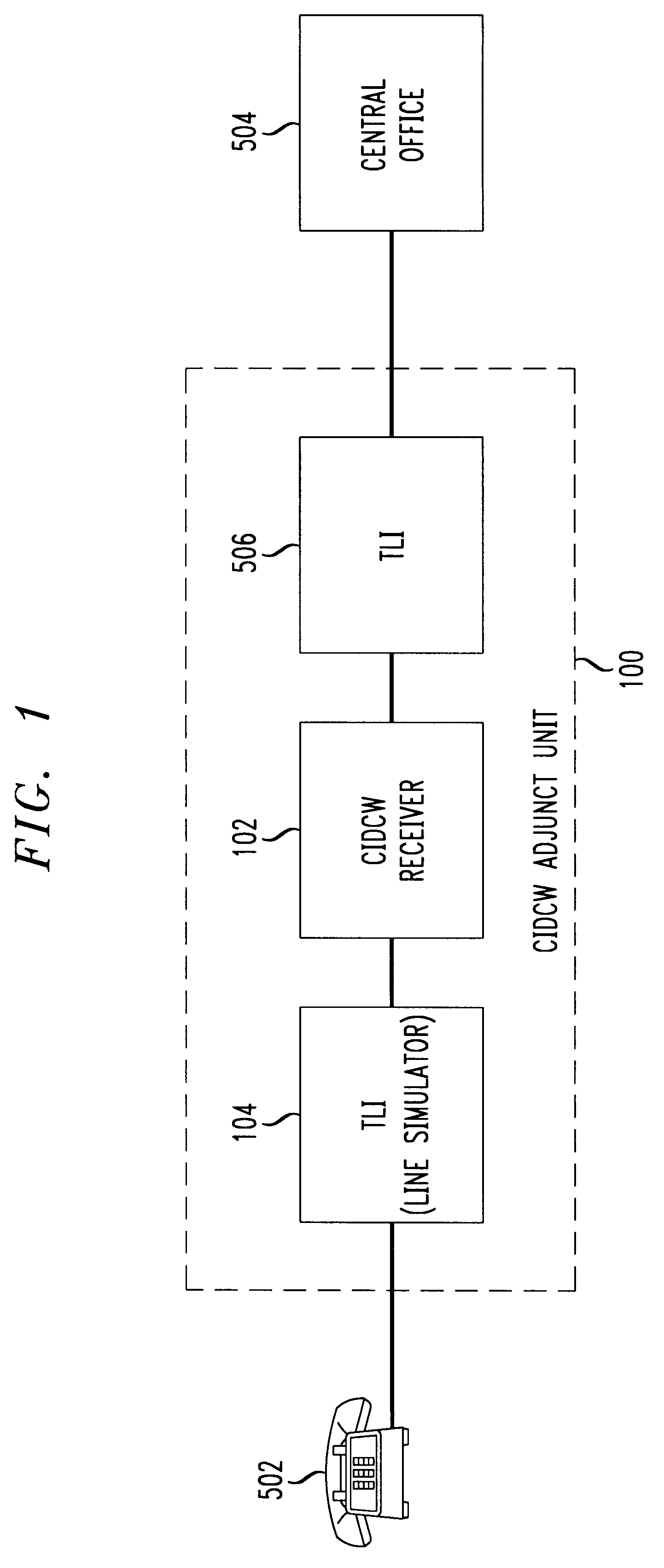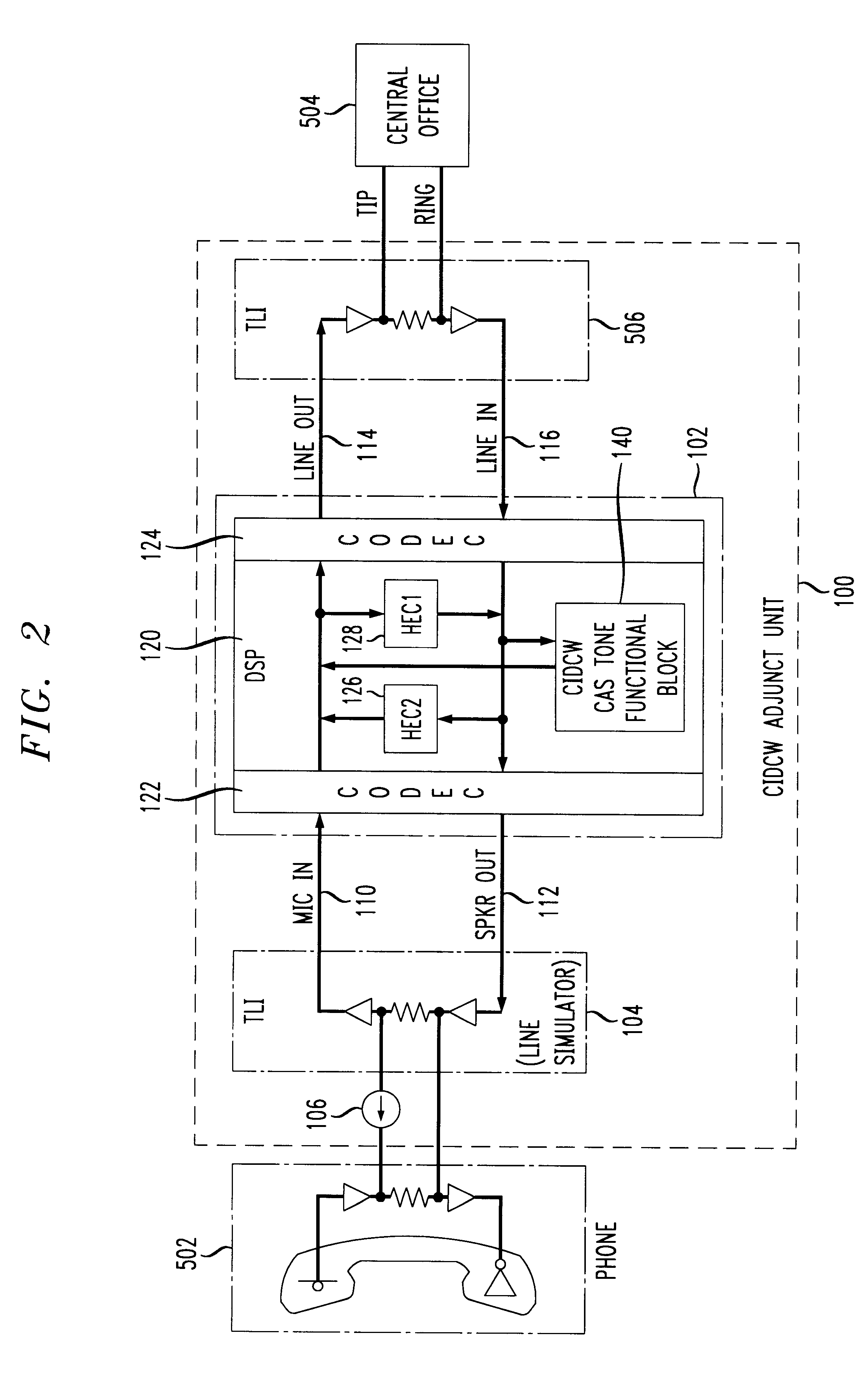Call related information receiver unit
a call related information and receiver unit technology, applied in the field of enhanced detection of non-voice information, can solve the problems of false detection, speech adds complexity to the algorithms employed to detect the alerting cas tones, and voice signals of conversation to interfere with the call related information
- Summary
- Abstract
- Description
- Claims
- Application Information
AI Technical Summary
Problems solved by technology
Method used
Image
Examples
Embodiment Construction
The present invention places an adjunct CIDCW receiver unit comprising two telephone line interfaces (TLIs) in series between the telephone line from the central office and the customer premises equipment, e.g., a telephone, rather than in parallel as in conventional adjunct CIDCW receiver units. The series interconnection allows the inventive adjunct CIDCW receiver unit to disconnect, mute or suppress the microphone signal from the customer premises equipment from being included with the signal analyzed by the call related information receiver portion of the adjunct CIDCW receiver unit.
FIG. 1 shows an exemplary embodiment of an adjunct CIDCW receiver unit 100 in accordance with the principles of the present invention.
In particular, the adjunct CIDCW receiver unit 100 includes two telephone line interfaces (TLIs) 104 and 506, together with a CIDCW receiver 102. The first TLI 506 is placed on a line-side of the CIDCW receiver 102, and the second TLI 104 is placed on the customer prem...
PUM
 Login to View More
Login to View More Abstract
Description
Claims
Application Information
 Login to View More
Login to View More - R&D
- Intellectual Property
- Life Sciences
- Materials
- Tech Scout
- Unparalleled Data Quality
- Higher Quality Content
- 60% Fewer Hallucinations
Browse by: Latest US Patents, China's latest patents, Technical Efficacy Thesaurus, Application Domain, Technology Topic, Popular Technical Reports.
© 2025 PatSnap. All rights reserved.Legal|Privacy policy|Modern Slavery Act Transparency Statement|Sitemap|About US| Contact US: help@patsnap.com



